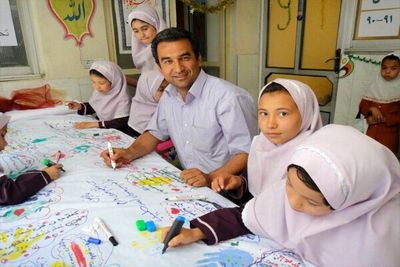Speaking to the Persian service of MNA on Sunday, he noted, “Whoever has the ability to flee will leave the country anyway.”
He called Iran, Pakistan and Tajikistan their destination and added, “Iran is one of their main hopes, because they have close friends and relatives in Iran.”
“In addition, they have no problem with language and culture in the country and they have a lot in common with Iranians on religious issues,” said Naderi, who has been nominated by Iran for the IBBY-iRead Outstanding Reading Promoter Award and the IBBY-Asahi Reading Promotion Award in 2022.
“Iran has also been Afghan tourists’ popular destination in peacetime,” he added.
“Anyway, the remarkable cultural affinities between Afghanistan and Iran draw Afghan people to Iran,” noted Musavi, a foreign member of the Iranian Association of Writers for Children and Youth.
However, he said that it will take a long time for Afghan immigrants to adapt themselves to Iranian society.
He also said that one of the main problems of the Afghan immigrants will be their children’s education in Iranian schools.
Iran has prepared administrative arrangements for Afghan children’s education, however, all schools in the satellite suburbs of Iranian cities, where Afghan people select to live, are filled in capacity, Musavi stated.
The difference between the educational systems in Afghanistan and Iran will be another major problem for Afghan immigrants, he said.
Musavi expressed his thanks to the Iranian government and teachers and said, “I have worked as a teacher for a long time and I know how it is a difficult job, especially when you have to teach Afghan children who have problems with their language and are facing with mental problems.”
Iran houses about 3 million Afghan refugees, who have been warmly received, at least, by the cultural community in the country.
However, the deep recession facing Iran following the U.S. withdrawal from the 2015 Iran nuclear deal caused undocumented Afghan migrants to return to their country.
Source:Tehran Times

